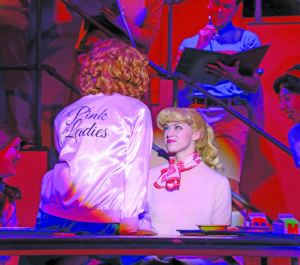A common mistake made by amateurs is the way they play overcards after the flop when the flop misses completely. Overcards are hole cards that are of higher rank than any card on the board.
In deep stack no limit hold’em tournaments, players start with a lot of chips. In these tournaments, the most important decisions are the ones made after the flop. That’s not the case in tournaments where the average stack is shallow. In these tourneys, pre-flop decisions are essentially all you have. It’s an easier form of poker to play. With fewer decisions to make, it’s essentially a two card game where you’re hoping for the best.
So let’s look at a sample hand in a deep stack tournament where you call a raise with K-Q and the flop comes 9-7-3.
If your opponent bets on the flop, fold your hand right there. Don’t try to be a hero; you have nothing!
But you decide to call anyway. Even if you do manage to improve your hand by catching a king or a queen, there’s still no guarantee that you’ll win the hand. Your opponent could have pocket nines, or even A-A or K-K. He’d have you dominated and you’d be destined to lose a decent-sized pot.
Besides that, you’d only have a 14% chance of catching a king or queen on the turn. When you combine that slim possibility with the fact that even if you did get lucky, you still might lose, well, folding your hand should be the obvious decision.
And there’s another reason to dump this hand. Say you did catch a king or queen. The fact is that one pair hands are rarely good enough to win big pots in no limit hold’em. Trust me; even if you were to pair up your king, the best play is still to proceed with caution.
The only situations where you might want to play after the flop with overcards are if you’re taking a stab at stealing the pot on a bluff or when you have additional outs to go along with your overcards.
For example, say you decide to raise before the flop with K-J. The big blind calls and the flop comes 2-2-7. Your opponent checks.
There’s no way for your opponent to know that you missed the flop completely. So, make one more bet on the flop hoping to get him to fold his hand on your bluff. Now, if he calls, or worse, raises, put on the brakes; there’s no need to lose any more chips than necessary.
You can also safely play your overcards when you flop a straight or flush draw.
In this example, you call a raise with Qd-Jd and the flop comes 8s-9h-4d. You’re obviously hoping to catch a ten to complete a straight, or even a jack or queen to give you a possible winning hand. If a ten comes on the turn or river, you’d play your hand aggressively in a big pot. But if a jack or queen hits, again, play your hand cautiously.
If instead of a straight draw you flop a flush draw, you’ve got the green light to play your two overcards. This situation yields a very powerful drawing hand. In some cases, it will even be a favorite over a pair on the flop.
Say you’re dealt the As-Ks and your opponent holds Jh-Jd. The flop comes 9s-6s-2d. While the pocket jacks might appear to be the best hand, your suited A-K will actually win the pot over 50% of the time. Go ahead and play this hand with a big bet.
Visit www.cardsharkmedia.com/book.html for information about Daniel Negreanu’s new book, Hold’em Wisdom for All Players.
© 2008 Card Shark Media. All rights reserved.










